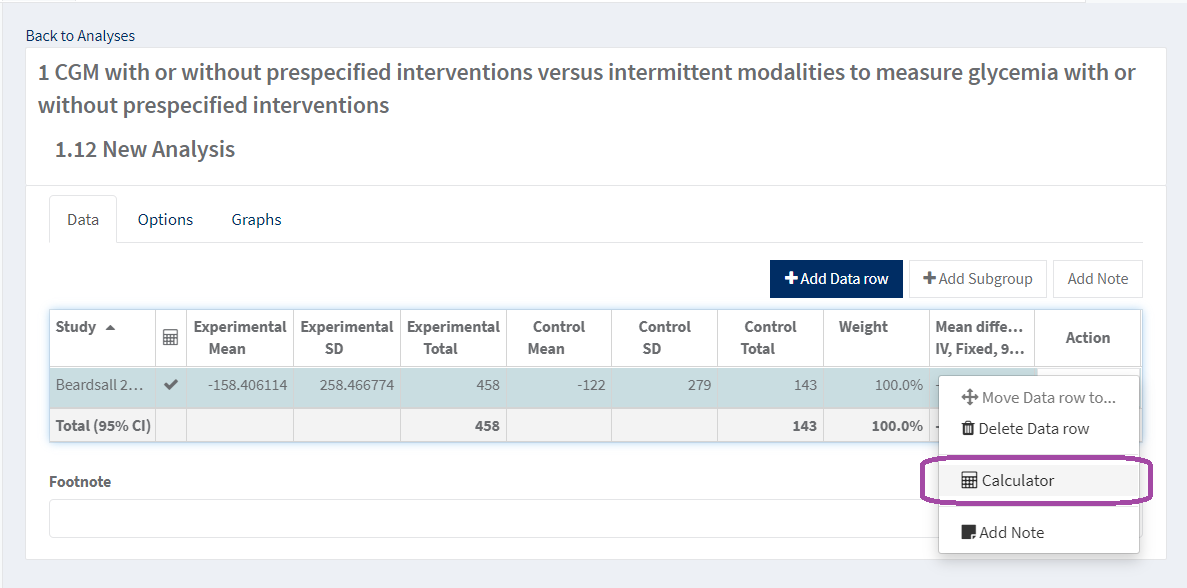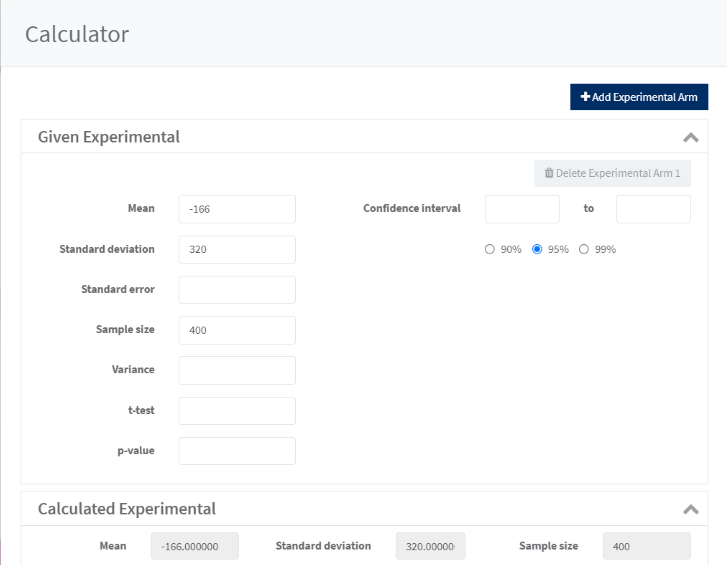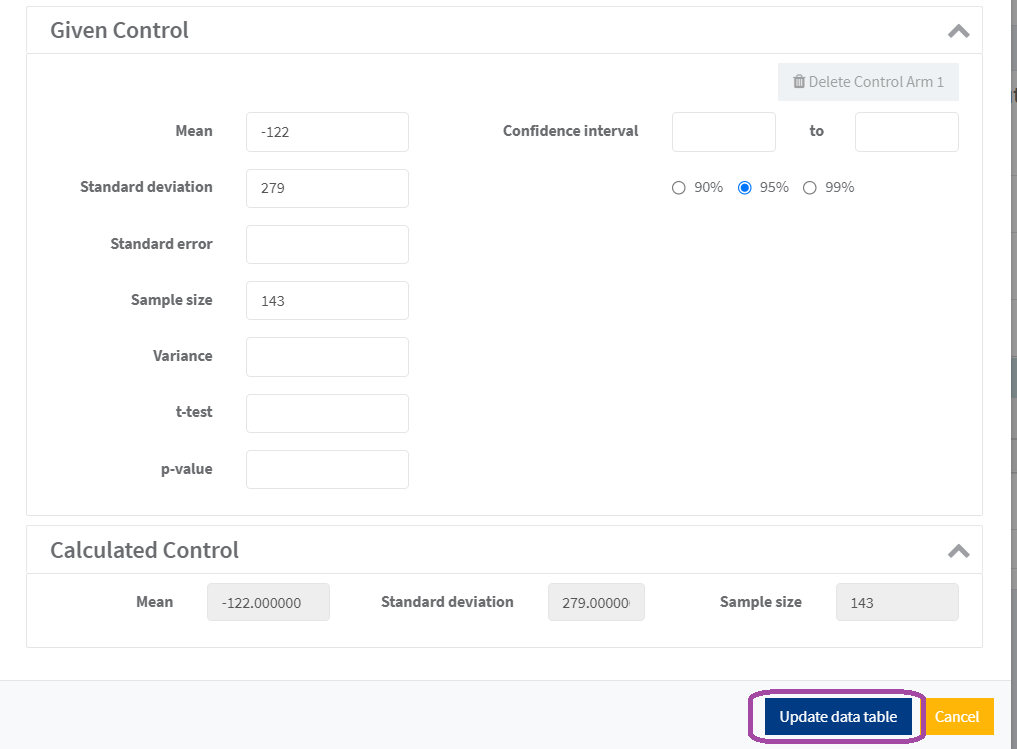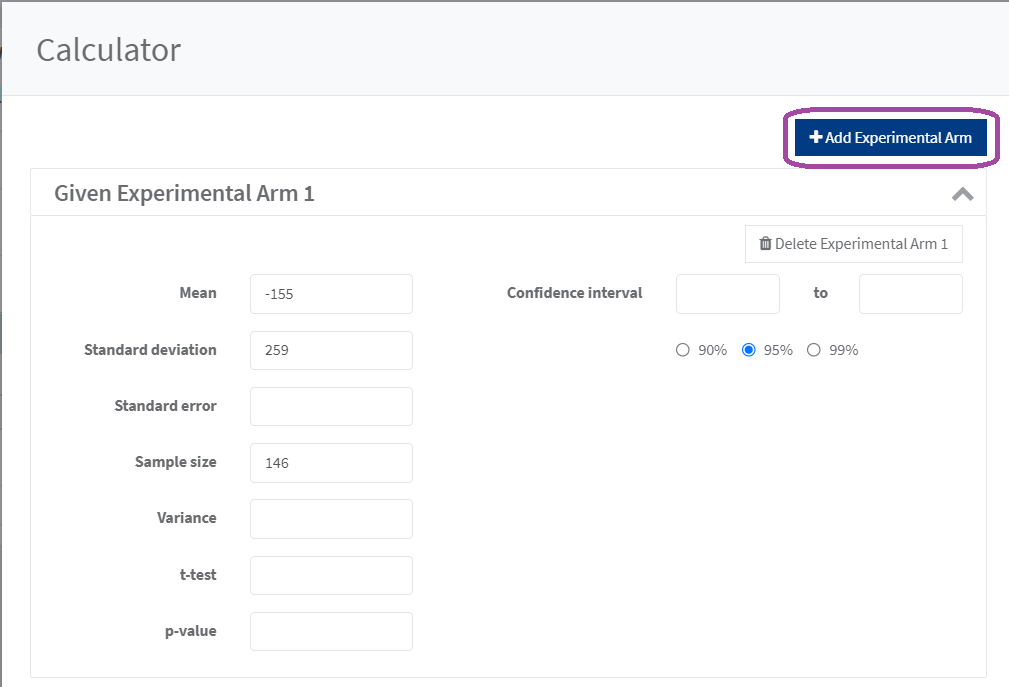Calculator
The calculator function in RevMan can be used to transform raw data extracted from study reports when it does not match the format required for meta-analysis.
There are various scenarios where this might be needed, and the approach in RevMan differs depending on the type of data available and the desired output. Common uses include:
- transforming standard errors or confidence intervals for group means into standard deviations (within a continuous analysis)
- combining continuous data for two related arms into a single data row (within a continuous analysis)
- entering two-by-two data in the same analysis as pre-calculated odds ratios or risk ratios (within a dichotomous GIV analysis)
- entering experimental and control group data in the same analysis as pre-calculated mean differences (within a GIV continuous analysis)
- Entering a mean difference, standard error and sample sizes for the groups (within a manual SMD GIV analysis)
RevMan saves the data entered via the calculator and the transformed data output which makes the process more transparent, and the data easier to check and manipulate.
View the statistical algorithms used in the RevMan calculator.
1. Access calculator
You can access the calculator from:
- The analyses: go to Analyses in the left-hand menu, select Edit analysis to access the Data tab.
- The included studies: go to Studies > Included in the left-hand menu, select Edit study and go to the Result data tab.
Then, click on the Action drop-down menu and choose Calculator.
The calculator is not available when analyzing two-by-two data directly, such as the number of people with and without an event in each group. It can only be used when converting this type of data in a GIV analysis.
2. Enter data
In the given panel you can enter the data reported in the study. Note that some of the fields have validation to ensure you are inputting the correct data. If you enter inconsistent data RevMan will use the most relevant value and ignore the other values. There is validation in place to help you detect if you are entering data on the wrong format.
3. Update data table
When you have enough given values the calculated values will be shown, and you can choose to update the data table which will populate the result data table with the calculated values.
4. Access previously calculated data
Analysis results calculated using the calculator will be saved when you click ‘Update data table’ and this will be indicated in the result data table next to the study ID (see figure below). All the inputted data in the calculator will be saved, not only data used for the calculations.
Note that data that is saved by the calculator will be deleted if any data related to the result row is changed in RevMan. RevMan will prompt you to accept this.
5. Combine arms
In some trials, more than one arm per group is reported. Then it will be useful to use the calculator to calculate a pooled mean and standard deviation. You do this by clicking ‘Add Experimental Arm’ or ‘Add Control Arm’. The calculator will then automatically pool the means and standard deviations when you have entered data for the arms. There is no limit to how many arms you can add. You can combine arms for analyses with continuous data type and for GIV analyses with continuous data.




